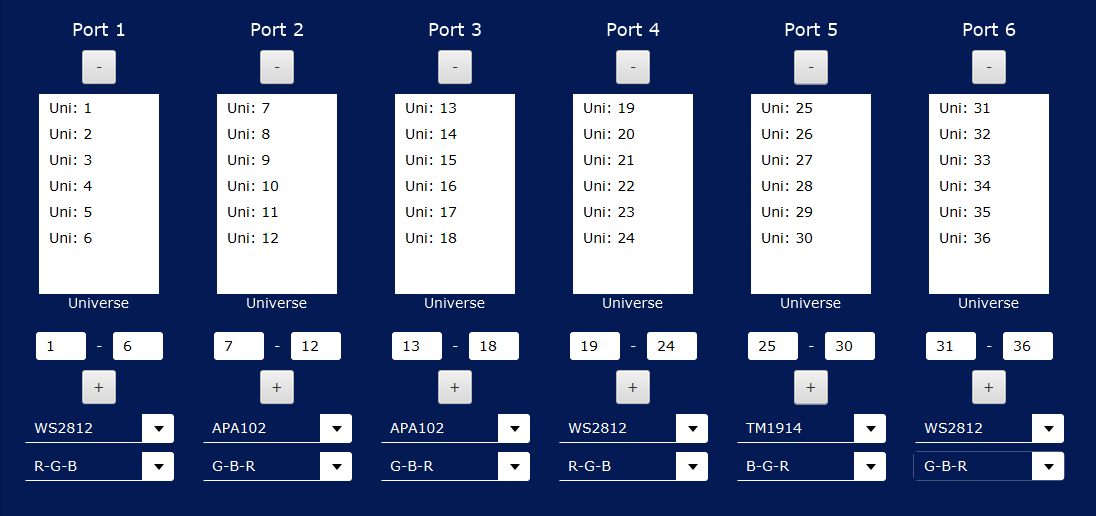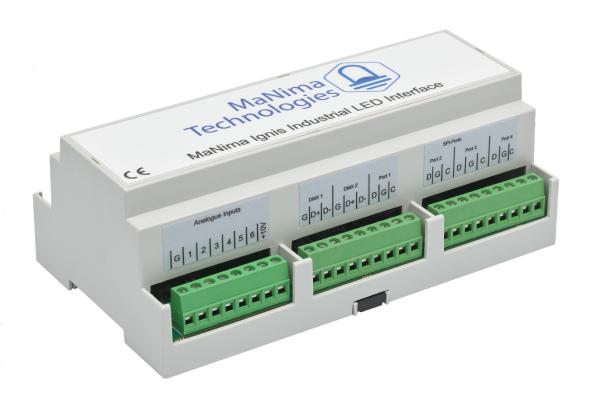Mapping
LED mapping (or pixel mapping) is the designing of a virtual map of ‘light fixtures’ created in software such as ELM, Madrix 5, lightjam, madmapper and many more. The virtual map is called a ‘patch’.
ID and universes
The light fixtures are given an ID, channels and a universe. The ID is the name given to the light fixture. The number of channels assigned to the light fixture depends on the number of colours the light fixture has. An RGB LED for example has 3 channels, while an RGBW LED has 4 channels. Each channel is given a universe. A universe is a group of 512 channels. This means that you can have multiple channels of the same number, for example 3 channels "46", as long as they are not in the same universe.
Patches
Patches can be loaded in a lighting controller (Madrix 5, ELM etc.). With the lighting controller you can play certain effects or videos over the patch. Each pixel in the patch represents a LED chip, it will show the colours of the effect in real life, since the led chip knows which position he has in the patch. Patches can be very different from each other. The main reason why there is such a big difference is the size and complexity of a patch. Complex patches can consist of many different arbitrary shapes, or complicated wiring requirements.
LED mappers
LED mappers transmit their data over the ethernet, with a protocol called Art-Net. Art-Net is received by the MaNima Interface. The MaNima interface decrypts the Art-Net and send a particular IC protocol (such as WS2812B, HD107S or DMX) through a port, which is then received by a LED.




